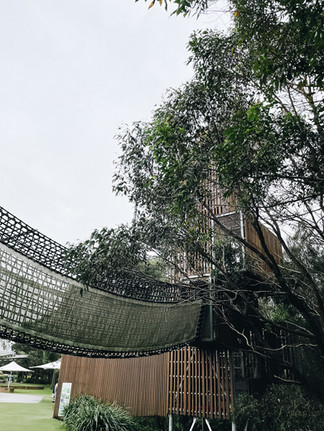SYDNEY OLYMPIC PARK
- The WEST Journal

- Jul 25, 2022
- 3 min read
Updated: Oct 5, 2023
The iconic home of the Sydney 2000 Olympic and Paralympic Games, this area is much loved and utilised for its world-class sporting facilities. Although a day out is not complete without a walk down Olympic Boulevard – we found that area is also steeped in pre-Olympics history.

Situated on the traditional lands of the Wangal clan of the Darug People, the Aboriginal people used the area as a source for food, clothing, shelter and transport by water. During the 1800s, the area belonged to the well-known families Blaxland and Wentworth who both began to transform the area for industrial purposes.
You can spend your day out on foot, bike, or in the car – as this area is full of plenty of scenic walking tracks, bike paths and connecting roads. To get the most out of your day, we recommend downloading Sydney Olympic Park’s Self-Guided Tour App which informs you of the significance of the area’s iconic and historic sites.
A good place to start is at the iconic Brickpit, which is a short walk from the Sydney Olympic Park train station and Olympic Stadium.
Built-in 1911 as the State Brickworks, this area was used as a brick manufacturing quarry until 1988. It was then the proposed site of a tennis centre for the Olympic Games, but plans were halted when the endangered Green and Golden Bell Frog was found in the area. Now, you’ll find a 550m elevated circular walkway from which you can observe the brickworks from above and listen carefully to the faint croaks of the bell frogs.
After you’ve enjoyed the impressive scenery, and read through the information panels, head down the road to the Shipwreck Lookout. Homebush bay was used as a shipwreck yard in the 1960s and 1970s. It was also used as a landfill area of Sydney’s waste. Since that time, the area has been cleaned up, these leftover shipwrecks are a lasting reminder of what the land once was.
Sydney Olympic Park is also a must-visit for bird watchers. You’ll find a bird hide that looks over swamp land where bird species from around the world migrate to. Depending on the season, you could spot a bird from Siberia or Alaska. For the keen birdwatchers, BirdLife Australia also has a discovery centre in Sydney Olympic Park, offering a unique experience to engage with the birds.
Next, head over to Blaxland Riverside Park and the Newington Armory. You can access the park by bike and footpath near the Wentworth Point ferry stop, or by the car entrance on Holker Street.
One of Western Sydney’s largest and most creative parks, this playground is fit with towers, water play areas, soft play, and flying foxes. Take a walk along the riverside path and grab a grinders coffee or a sit-down meal from the Armory Wharf Café. With an excellent view along the Parramatta River, this whole area will keep you busy for hours.
Make sure to explore the heritage-listed Newington Armory. The site was used for making armaments from 1882 until 1997 and was used by the NSW Military Forces (before federation) then the Royal Australian Navy. Today, you can explore the historic buildings, and walk alongside kilometres of railway that were used to transport equipment and armaments around the site.
If you’re looking to explore food options while out and about in the park, you’ll want to make your way back towards Australia avenue – down the road. You’ll find a variety of restaurants including Two Jay Burger Bar, Thai Palate, Piccolo Roma, and Ribs and Rump.
And if you’re looking for a contemporary dining experience, we recommend visiting Bacar Restaurant & Bar at the Pullman Hotel. This venue offers a premium gastronomic experience, with new set menus designed each week.
A day out and about Sydney Olympic Park will show you how rich this area is with historical and cultural significance. You’ll also notice the area is constantly being developed and renovated to continue as a world-leading destination for sport, culture, and entertainment.














































Comments